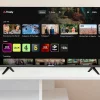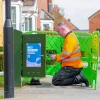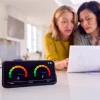Top 10 Fastest and Slowest Streets for UK Broadband in 2024

New research from Broadband Genie has analysed 207,711 internet speed tests in order to identify the top slowest and fastest ten UK streets for broadband. The slowest street was found to be Greenfields Road in Bishop Auckland (average downloads of 0.35Mbps), while the fastest was Tynemouth Street in London (921.76Mbps). But this isn’t the full story.
According to Thinkbroadband’s latest data, some 85.5% of UK premises are currently within reach of a gigabit-capable fixed broadband network (1000Mbps+), which primary reflects the combination of full fibre (FTTP/B) and hybrid fibre coax (HFC) lines. Similarly, some 98.2% of premises should be within reach of a fixed “superfast broadband” (30Mbps+) network.
However, the new study, which seems to mirror similar reports from Uswitch, is based on consumer speedtests. One issue here is that such reports don’t accurately reflect the underlying availability of faster networks and are thus more a reflection of consumer take-up (i.e. people on slower networks/packages may weight against those on faster ones).
Advertisement
The report does acknowledge the aforementioned issue and highlights how 9 out of the 10 slowest streets should, in theory, still be able to upgrade to get speeds of at least 30Mbps. Suffice to say, consumer awareness and adoption of faster packages remains a key issue, although this will change over time.
In other cases, consumers may be aware that a faster service exists, but they have simply chosen not to upgrade due to various issues, such as the potentially higher price, lack of support for the new network by their existing ISP, fear of switching, being stuck in a long contract term or a simple lack of need or desire for anything faster.
Speedtest-based studies like this can also be influenced by other factors, such as poor home wiring, the user’s choice of package (e.g. 1Gbps could be available, but people may pick a slower tier), local (home) network congestion and slow WiFi etc.
In short, take these results with a pinch of salt and remember, the slowest streets are the ones that cannot get a viable broadband service and thus won’t appear in these studies. Similarly, the fastest streets are those covered by the handful of providers capable of offering them speeds in the 7-10Gbps range, such as B4RN, Youfibre and a few others.
Advertisement
Table: Slowest 10 streets for UK broadband
| Rank | Street | Broadband speed (Mbps) |
| 1 | Greenfields Road, Bishop Auckland | 0.35 |
| 2 | Collingdale Road, Northampton | 0.47 |
| 3 | Southcote Farm Lane, Reading | 0.61 |
| 4 | Water Lane, Oakham | 0.62 |
| 5 | Barrowgate Road, London | 0.67 |
| 6 | Birch Grove, Gillingham | 0.72 |
| 7 | Falmouth Close, Eastbourne | 0.73 |
| 8 | Grosvenor Street, Liverpool | 0.81 |
| 9 | Garden Lane, Royston | 0.86 |
| 10 | Turnberry Crescent, Aberdeen | 0.90 |
Table: Fastest 10 streets for UK broadband
| Rank | Street | Broadband speed (Mbps) |
| 1 | Tynemouth Street, London | 921.76 |
| 2 | Bloxworth Close, Wallington | 910.10 |
| 3 | Lumsdale Crescent, Matlock | 886.32 |
| 4 | Saxon Dale, Leicester | 823.98 |
| 5 | Moatview Park, Belfast | 794.34 |
| 6 | Limbury Road, Luton | 780.12 |
| 7 | Powerscourt Road, Portsmouth | 759.96 |
| 8 | Orrell Road, Wigan | 757.68 |
| 9 | Curzon Road, Rochdale | 757.54 |
| 10 | Tanfields Grove, Corby | 752.28 |
For streets to qualify for the study, postcodes needed to have the following criteria:
-
A minimum of three speed tests from three unique IP addresses.
-
Speed tests are from a commercial internet service provider.
-
The test is from a fixed-line internet connection.
-
At least 10 residential properties required at a postcode.
Postcodes were ranked from highest to lowest on a combination of broadband download speed and broadband upload speed, using an 80:20 ratio.
Advertisement
Mark is a professional technology writer, IT consultant and computer engineer from Dorset (England), he also founded ISPreview in 1999 and enjoys analysing the latest telecoms and broadband developments. Find me on X (Twitter), Mastodon, Facebook, BlueSky, Threads.net and Linkedin.
« Broadband ISP LilaConnect Adds £100 Voucher for New Customers






















































About the only use of that report in my view is to ISP;s as it identifies areas where it many be able to up sell
Totally agree Bob
Was this AI generated useless information
TBB say: in the list of the ten slowest streets all but 2 can get speeds well over 100 Mbps if people sign up to the right packages.
And would the remaining 2 be covered by 4G/5G based home broadband?
(surely would be covered by satellite)
I would be really interested in the product names for the ten slowest services. There is over a 2500x difference between the slowest and fastest speeds listed here. Are some of the slowest ten speeds at properties where consumers are confused about different services due to product naming and then don’t think changing to another product using a similar nomenclature will make a difference?
BT/OR as unreliable underlying network.
The slowest speeds are always going to be properties on Openreachs network that only have access to ADSL, and most likely rural. Greenfields Road is a prime example but the data is garbage as they have access to FTTP from Openreach now.
@Name – how is BT/OR unreliable?
@The Facts says
It is about underlying network, long distance copper line. This is how.
Aren’t these just going to be lists of streets where people can or can’t afford to pay for a faster internet connection? My street has 1Gbps available but I’m the only one who has taken it up so far for economic reasons (I’m lucky to have a decent job but there are a lot of retired/out of work on the street).
Is the slowest street effectively below a speed needed to support Digital Voice (2025 analogue switchoff)?
Surely Openreach would need to resolve the issues with lowest 10 or so to ensure that (although maybe via SOTAP for analogue)
pstn is by jan 2027, was changed months back from dec 2025
The TBB article says the slowest street has had Openreach FTTP available since August, so the list was out of date by the time it was published.
Greenfields Road has FTTP available so I assume any customers who complained would be offered an upgrade.
As the TBB report on this hints at, it’s not a scientific survey, it’s just something put out to get the “Broadband Genie” name in people’s minds and to try and push traffic to their site so they can generate revenue from referrals.
Firstly it’s based on people running a speed test on that website which is an in-browser test running on the device so likely to have a high percentage of Wi-Fi clients. Secondly, it’s a report on what people are subscribing to, not a report on what’s available. Taking the second entry in that list at random shows 65-80Mbps SOGEA is available, for example. There’s no point doing any planning or worrying off the back of this publication.
Are these tests done via wired? If so, for the slowest street that’s shocking!
They are all Wired, they only looked at Wired connections
It said so in their Report under Criteria
Greenfields Road, while it starts in Bishop Auckland (which in itself would be considered rural if you live down south), ends up on the A68 just south of High Etherly. There are some properties out in the countryside of rural country Durham on the road. This is presumably what brings the speeds right down.
The Streetview which is August this year would seem to confirm that TBB are correct and these properties now have access to Openreach FTTP (the CBT’s seem to be present on the poles) and the data is out of date anyway.